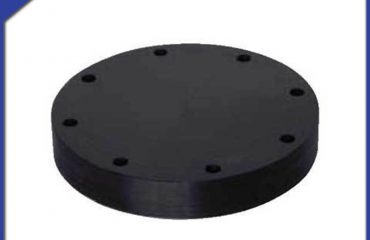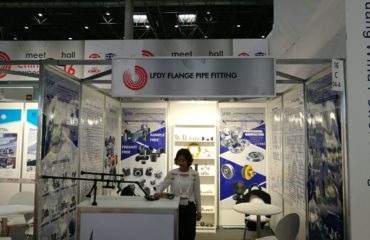
Plate flanges are commonly used in pipe systems to provide a secure connection between two pipes or between a pipe and a fitting. They offer several key features that ensure a reliable and secure connection.
Firstly, plate flanges provide a large sealing surface area. The flat plate shape of the flange offers a wide surface for the gasket to make contact with, which helps to distribute the pressure evenly across the entire sealing area. This helps to prevent leaks and ensures a tight seal between the two connected pipes.
Plate flanges also offer a high degree of versatility. They can be easily welded or bolted onto the pipe, allowing for different types of connections depending on the requirements of the application. The ability to weld the flange directly onto the pipe provides a permanent and strong connection, while bolting allows for a more flexible and removable connection.
Another important feature of plate flanges is their ability to withstand high pressure and temperature conditions. Flanges are often used in pipe systems that handle fluids or gases under high pressure or temperature. The plate flanges are designed and manufactured to meet specific pressure and temperature ratings, ensuring that they can safely handle the demands of the system. This helps to prevent any potential failures or leaks, which could be catastrophic in high-pressure or high-temperature environments.
Plate flanges are also known for their durability and resistance to corrosion. They are typically made from materials such as carbon steel, stainless steel, or alloy steel, which have good corrosion resistance properties. This makes plate flanges suitable for use in various applications, including those involving corrosive fluids or environments. The high-quality materials used in their construction ensure that plate flanges can withstand the test of time and maintain their integrity even in harsh conditions.
In addition to these features, plate flanges are designed to meet industry standards and regulations. Various organizations, such as the American Society of Mechanical Engineers (ASME) and the International Organization for Standardization (ISO), have established standards for the design, manufacture, and performance of flanges. Flanges that meet these standards are tested to ensure their functionality, safety, and reliability. This ensures that plate flanges can be trusted to provide secure connections in pipe systems.
To ensure a secure connection, proper installation and maintenance of plate flanges are crucial. The flange and the pipe should be properly aligned before welding or bolting, and the bolts should be tightened to the appropriate specifications. Regular inspections should be conducted to check for any signs of wear, damage, or leakage. Any issues should be promptly addressed to prevent further problems.
Plate flanges ensure secure connections in pipe systems through their large sealing surface area, versatility in connection methods, ability to withstand high pressure and temperature, durability, resistance to corrosion, and compliance with industry standards. By providing reliable and tight seals, plate flanges help to prevent leaks and maintain the integrity of the pipe system. Proper installation and maintenance of plate flanges are essential to ensure their effectiveness and longevity.
 Language
Language Espanol
Espanol English
English Italian
Italian عربى
عربى
 Skype: chinamaker99
Skype: chinamaker99  Tel: 86-316-5120812
Tel: 86-316-5120812 Email:
Email:  Whatsapp:
Whatsapp: 
